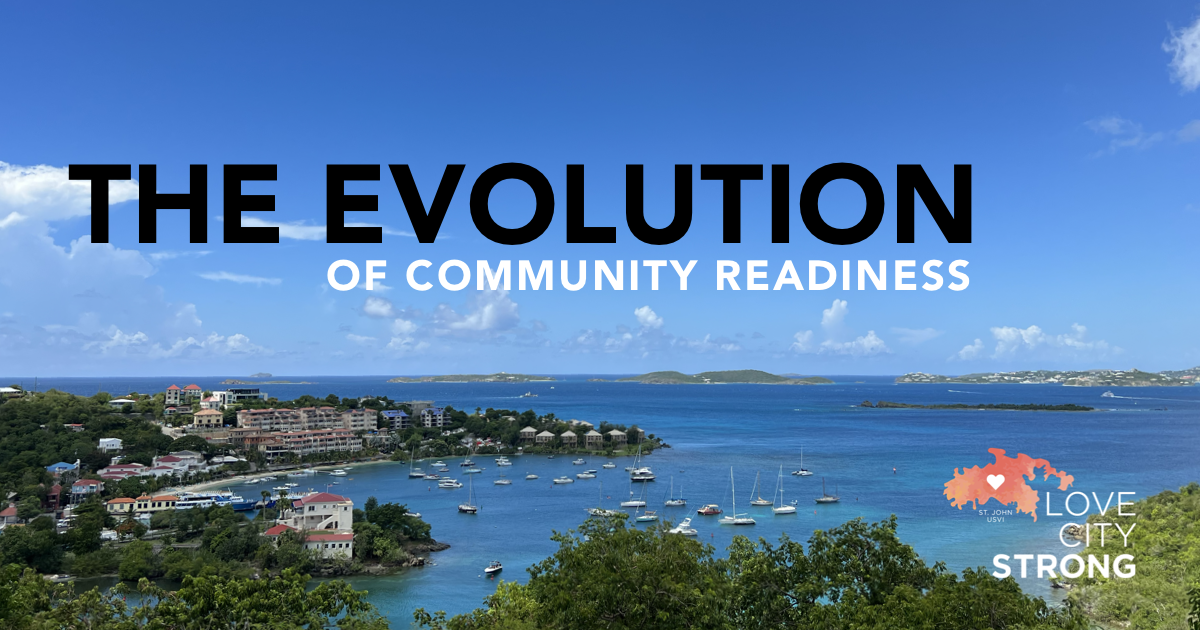The Evolution of Community Readiness

I have been anxious.
As we watch Tropical Storm Lee approach the Lesser Antilles, my anxiety has been increasing despite strong and unified forecasts projecting its passage to our north. It’s an anxiety shared by the rest of the community for a simple reason – Lee’s path reminds us of Irma.
It’s been six years, but for most of us it might as well have happened yesterday. Irma, then Maria, changing the course of our lives forever.
In late August and early September of 2019, I felt the anxiety of disaster empathy for the first time. Hurricane Dorian ravaged the Abacos and Grand Bahama Island, and the USVI collectively held our breath as we remembered our own trauma and knew exactly what was in store for the communities impacted by Dorian. In the years since then, this particular form of worry and care and fear has cropped up at least annually, sometimes monthly. Most recently, Lahaina’s heartbreak echoes back to our own, familiar as we are with small island communities both beset and supported by tourism, communities facing devastating disaster impacts in many ways exacerbated by the very things we’re told keep us alive.
Whether it is hurricanes, or fire, or flooding, or earthquakes, or some other hazard that imparts disaster, the commonly resounding theme is this: communities save themselves.
As disaster impacts increase in scope and frequency (2023 had seen 15 “billion dollar” disasters even before the Lahaina Fire and Hurricane Idalia, and we’re still four days from the peak of the Atlantic Hurricane season), federal resources are stretched thin. It is often assumed that FEMA’s arrival post-disaster is supposed to herald “Recovery”, but the truth is, FEMA is not there to make us whole. Preparedness, response, and recovery are all grassroots initiatives, at their core. No one knows unmet needs like community and faith-based organizations. No one knows the nuances of response like local first responders and emergency services. A federal response is never going to roll into town and succeed unless they are plugging in to local knowledge, customs, and experience.
I’m not dropping any groundbreaking information here. The National Preparedness Goal endorses a whole community approach, FEMA has placed increased emphasis on community partnerships and lifelines over the past several years, and any community that has been impacted by a disaster will tell you categorically that community engagement and community readiness are at the heart of resilience. The question now is, how do we engage communities BEFORE the disaster? Over the next decade, more and more communities are going to experience disasters that are historically unprecedented. There are lessons out there to be learned, best practices to be adopted, and relationships to be built. How do we best cache this knowledge so that small communities are learning from one another, proactively, and how do we build a system that allows federal mitigation dollars to truly build capacity and support local resources?
When I think about where we were on this day six years ago, and I think about where we are now, the antidote to my anxiety is this: I know readiness is a growth-game in my community. I feel confident in our collective preparedness and in our ability to support ourselves and each other. My neighbors, my colleagues, our partners… that’s who I find solace in. The past, present, and future of preparedness and resilience is community. Let’s build the systems that lift up communities in blue skies, so that when gray skies come, we’re ready.
To learn more about what we do at Love City Strong, or to donate in support of our work, please visit www.lovecitystrongvi.org.
